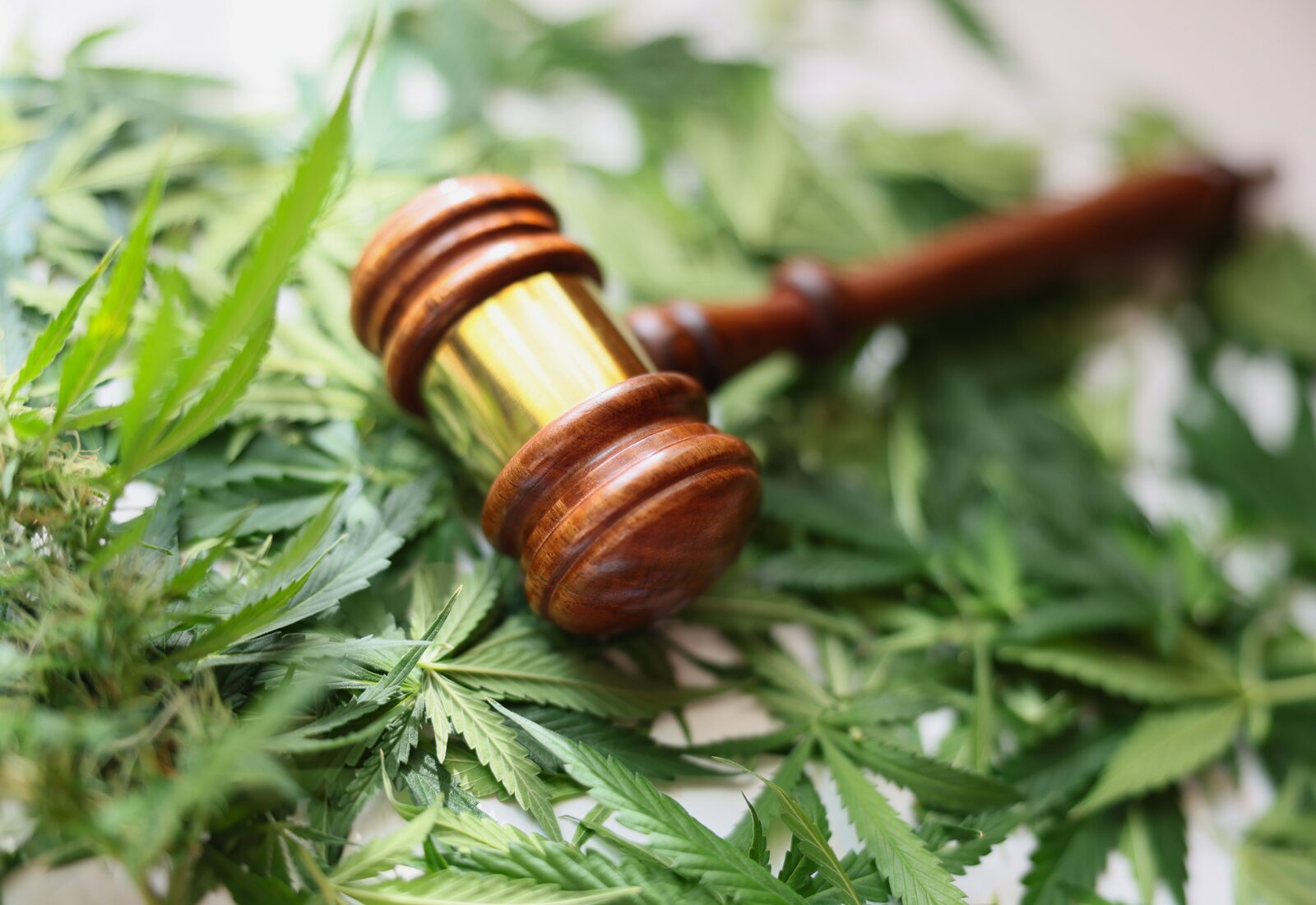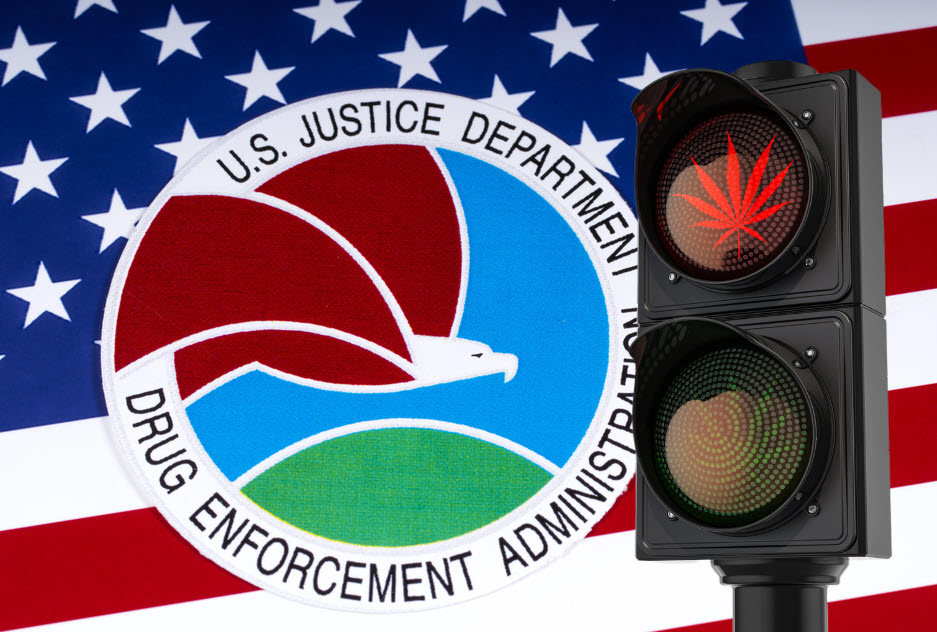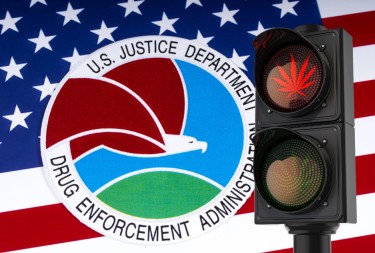Cannabis News
Cannabis Code Enforcement Fines Must be Remedial, Not Punitive, Federal Court of Appeal Holds
Published
4 weeks agoon
By
admin
The Ninth Circuit Court of Appeal has reinstated a civil rights lawsuit against Humboldt County, California, that challenges the county’s practices in imposing punitive daily fines. It is the first time a federal appellate court has weighed in on local government’s enforcement of code violations involving cannabis farms.
The Court of Appeal decision
The decision, in Thomas v. County of Humboldt, comes after years of complaints by cannabis cultivators that local governments impose unfair fines for technical violations at licensed farms. That counties and municipalities have adopted and are enforcing large fines involving licensed properties is one of many reasons why increasing numbers of farms have given up their licenses and shut down completely or returned to the illicit market. This is hurting state efforts to bolster the legal market and suppress the illicit market for cannabis.
Lessons for industry and regulators
A takeaway from the decision is that local governments need to keep the goal of remediation in mind in establishing penalties, must be more reasonable in allowing cultivators to fix violations, and more flexible in decisions to impose fines and settling disputes. The decision should motivate county and city attorneys, and cannabis licensees and applicants, seek assistance from a mediator with expertise in the cannabis market and regulation. The courthouse might not now be as friendly a venue for local government as it has been in the past.
Most cannabis businesses that run afoul of local codes pay the penalties, no matter how unfair they might seem, because they can’t afford a long legal battle and the administrative and court processes are tilted against the property owner. Administrative hearing officers routinely uphold notices of violations and the penalties imposed by code enforcement officers. Writs of mandate brought against local government in state court, particularly in smaller counties, are extremely difficult to win.
Background on the Thomas case
What has made the Thomas case viable is that several plaintiffs banded together in a civil rights class action in federal court under 42 U.S.C. § 1983, alleging that Humboldt County’s penalties for cannabis abatement violate the Eighth Amendment’s Excessive Fines Clause.
Humboldt County established a schedule of daily fines for illegal cannabis cultivation of up to $10,000, with a minimum of $6,000. Upon receiving a notice of violation from the county, the party has 10 days to abate all violations, subject to an appeals process, during which penalties continue to accrue. Violations included not just the illegal cultivation of cannabis itself, but also any other violation that facilitates illegal cultivation of cannabis. The Thomas plaintiffs contended that the county issues violation notices with hefty fines based on imprecise data (such as satellite and drone photos) and for code violations that originated with previous property owners.
The lower District Court dismissed the lawsuit on the basis that the plaintiffs lack legal standing, because they had not, at the time of suit, paid any penalties. But the Ninth Circuit held that the plaintiffs had concrete injuries, providing standing, because they suffered emotional distress and had incurred expenses with engineers and attorneys as they attempted to abate the alleged violations and defended themselves in hearings.
Getting to the merits of the lawsuit, the Ninth Circuit held that the plaintiffs had plausible claims under the Excessive Fines Clause because the penalties were punitive, not remedial. The Ninth Circuit agreed with the plaintiffs that the fines were unconstitutionally excessive because (1) the notices were vague, often inaccurate, or involved violations that pre-dated the plaintiffs’ occupation of their properties; (2) lesser penalties could accomplish the same health and safety goals; and (3) the alleged offenses caused no harm beyond a technical lack of compliance with the county’s permitting regulations.
Humboldt provides for an administrative appeal before a hearing officer who determines whether a violation has occurred or continues to exist. The hearing officer can only reduce the penalty for a violation in limited circumstances and cannot reduce it to less than $6,000 per day. Although the Ninth Circuit did not explicitly address it in the Thomas decision, a property owner in most circumstances also can be forced to pay the county or municipality’s abatement costs and legal expenses — including those incurred in a subsequent writ of mandate proceeding in state court. The Ninth Circuit agreed that the Thomas plaintiffs had come under:
“immense pressure to settle due to the County’s issuance of ruinous fines, . . . its undue delay in providing hearings, its denial of permits while abatements are pending, and the cost the County imposes to prove one’s innocence.”
The Ninth Circuit found that Humboldt County’s fines were “clearly punitive, not remedial as argued by the County.” The fines could reach millions of dollars, and, in the case of one plaintiff, the fines dwarfed the value of her property. The appellate court was untroubled by the involvement of cannabis, which remains unlawful under the federal Controlled Substances Act:
“[I]t seems clear to us that lesser penalties could accomplish the same health and safety goals,” and “the offenses here have caused no harm beyond a technical lack of compliance with the County’s cannabis permitting regulations.”
The Thomas plaintiffs’ strategy pays off
The Thomas plaintiffs’ strategy of going to federal court was fraught, because the court could have just as easily declined to hear the matter under the illegality doctrine, but it paid off here; the Ninth Circuit not only considered the case but also disregarded the problem of whether the plaintiffs were entitled to any remedy under federal law.
The Ninth Circuit concluded by acknowledging that local government is “often at the forefront of addressing difficult and complex issues,” but it should use “flexibility” in decision making and “cannot overstep its authority and impose fines on its citizens without paying heed to the limits posed by the Eighth Amendment.”
Note: This post was first published January 6, 2025 on the Alger ADR Blog
You may like
-


7 best bongs of 2025 by Leafly
-


Texas Citizens Want Legalized Cannabis But
-


Does Derek Maltz at the DEA Now Kill All Cannabis Legalization and Rescheduling Hopes?
-


Why Don’t More U.S. Investors Look Abroad for Marijuana Investment?
-


Alto Dispensary is a family affair in Tribeca
-


A Few Jokes To Make Your Monday Better
Cannabis News
Does Derek Maltz at the DEA Now Kill All Cannabis Legalization and Rescheduling Hopes?
Published
17 hours agoon
February 4, 2025By
admin

Is There Hope For Cannabis Rescheduling With Maltz In Office?
In January, fear spread across the nation when Derek S. Maltz was appointed as the Drug Enforcement Agency (DEA)’s Acting Administrator.
On January 21st, 2025, he took office, but we’re yet to find out if he’s the great threat to cannabis rescheduling that we think he is. Having Maltz in the DEA office could quite literally be a cannabis prohibitionist’s dream: he has all the right ingredients in place to keep cannabis illegal and stop it from progressing. Rescheduling? Don’t even think about it.
NORML Deputy Director Paul Armentano even commented on the appointment, saying: “The new acting DEA Administrator is a lifelong drug war hawk whose outdated attitudes toward cannabis are out of step with those of most Americans. At a time when most Americans are demanding long overdue changes in federal cannabis policy, Derek Maltz epitomizes the failed policies and approaches of the past.”
You see, Maltz has long been vocal about his skepticism surrounding cannabis, including the benefits it can provide if rescheduled. And while the DEA press release describes Maltz as a “champion” when it comes to fighting global drug trafficking as well as terrorism, he’s not so hot about rescheduling cannabis.
Yes, even if Trump showed support for rescheduling weed! Just last September 2024, Trump posted on his social media site, Truth Social: “As a Floridian, I will be voting YES on Amendment 3 in November.”
“As President, we will continue to focus on research to unlock the medical uses of marijuana to a Schedule 3 drug, and work with Congress to pass common sense laws, including safe banking for state authorized companies, and supporting states rights to pass marijuana laws, like in Florida, that work so well for their citizens,” he said.
However, Maltz openly doubted the legitimacy of government efforts to reclassify cannabis, saying that under Biden, the government was “placing politics above public safety.”
As reported by Marijuana Moment, Maltz also put cannabis in a negative light and said it causes psychosis, during an NTD interview last year during a Turning Point USA event. “Marijuana is not the marijuana from the 70s or the 80s or the 90s. This is higher, pure-THC marijuana,” Maltz said.
“I’ve even talked to doctors about this. It’s actually causing psychosis, schizophrenia, depression, anxiety – so it’s really a gateway drug for these kids that don’t know any better,” Maltz said. “The mental illness – the depression and anxiety – is off the chats in America. So these kids are turning to drugs for help,” he was quoted as saying.
How Else Is Maltz A Threat To Cannabis Legalization?
In addition, Maltz’ decorated career in law enforcement, particularly his strict stance on organized crime and drug trafficking, may influence his positions when it comes to marijuana regulations and the businesses in the industry.
If Maltz continues his focus on policing, this could seriously hurt profits and the industry as a whole. There is no doubt that the political climate is turbulent at best, and with Maltz at the helm, with his claims of focusing on public safety and fighting against drugs, the pro-cannabis camp is more worried than ever. It does not help that the hearings initially scheduled to debate cannabis rescheduling was delayed; it should have pushed through in order to assess the rescheduling proposals so that cannabis may have been on its way to be listed as a Schedule III substance.
Unfortunately, the unstable and chaotic political climate as of late did nothing but delay these discussions.
Furthermore, Maltz might be spending a lot of time, money, and effort on capturing these so-called narco-terrorists during his time in the Drug Enforcement Agency. According to him, traffickers and drug cartels still rule the marijuana markets. This isn’t good if it happens, since this could cause more DEA raids or random, unnecessary investigations in legal cannabis markets. Besides, Maltz thinks that the cartels fuel the black market in America today. Maltz even said: “People aren’t going to pay for marijuana, for example, with these high taxes in these states that have legalized. They’re going to get it from the cartels, and that’s just reality.”
Conclusion
Trump’s stance on marijuana has continued to confuse people; it’s been mixed over the past few years. While Trump himself says supports rescheduling, his administration can quite literally make the decision to stop the rescheduling process completely. After all, administrative law states that if a federal agency hasn’t made a final decision before a new government takes place in the White House, then the appointed president has the freedom to direct that the rules be completely withdrawn.
On that note, we’d need a strong DEA head to change things. Things are hard enough as it is, the last thing we need is an obstacle in the government.
It’s truly unfortunate that we have Maltz in office; with him in leadership, any hopes for progressing on federal cannabis reform might go back to being just a dream. What he does over the next few months could create a serious divide between federal enforcement as well as state legalization efforts, and instead increase the hardships faced by businesses and public health.
While the future seems bleak, we have to keep a close eye on how political negotiations in the Trump Administration will fare in the near future. That said, we must never give up and continue to fight for legalization however we can.
DEA JUDGE STALLS ON CANNABIS, READ ON…
DEA CANCELS CANNABIS HEARING FOR 90 DAYS, NOT A DONE DEAL NOW!
Cannabis News
Why Don’t More U.S. Investors Look Abroad for Marijuana Investment?
Published
18 hours agoon
February 4, 2025By
admin
With ongoing tensions between U.S. state and federal marijuana laws, U.S. marijuana investments present significant legal and logistical challenges. This is especially true for investors with ties to federally regulated businesses. While some investors have accepted the risks of U.S. marijuana, others are waiting for major federal reforms. But what if there was a way to invest in marijuana without the looming threat of federal enforcement?
International marijuana operators might offer just that opportunity. Marijuana remains a Schedule I controlled substance within the U.S. (See Thoughts on the Terrible Pageant of Marijuana Rescheduling) Even if marijuana is moved into Schedule III, it will still be illegal to buy and sell interstate without a DEA license, and state markets won’t fundamentally change. This opens the door for investment and operational partnerships in legal marijuana markets abroad — without many of the risks associated with U.S. marijuana operators.
Some U.S. Code provisions relevant to investing in international marijuana markets
21 USC § 841(a)
Makes it illegal to manufacture, distribute, or possess with intent to distribute a controlled substance within the U.S.
21 USC § 959
Extends the reach of the Controlled Substances Act (CSA), criminalizing the intent to import a Schedule I substance into the U.S. This explicit reference to unlawful importation shows that Congress anticipated extraterritorial application of the CSA for certain sections (e.g. § 959) and not others (e.g. § 841(a)).
18 USC § 1956
Criminalizes monetary transactions involving proceeds from “specified unlawful activity”, including violations of the CSA. Unless a foreign investment or operational partnership resulted in the import of marijuana into the U.S., it would not rise to the level of a “specified unlawful activity.”
21 USC §§ 846; 18 USC 371; & 18 USC 2
Both conspiracy and aiding and abetting confer extraterritorial jurisdiction to the same extent as the underlying offense. Therefore, unless the foreign investment resulted in marijuana being imported into the U.S., such investment would not trigger these violations.
Key judicial interpretations on investing in international marijuana markets
The CSA does not speak specifically to foreign investment into an operation that would otherwise be illegal in the U.S. As such, we must look to judicial precedent.
The Supreme Court has emphasized that unless Congress speaks to the extraterritorial application of a law, then it does not generally apply to foreign activities. The relevant issue here centers on whether the foreign activity is intended to, or could reasonably be expected to, result in a violation on U.S. soil. For example, investing in a foreign operator that intends to illegally export marijuana into the U.S., would trigger a CSA violation. However, investing in a foreign operator that intends only to manufacture and sell marijuana outside of the U.S., would not trigger a CSA violation (ensuring robust SOPs and internal oversight policies is also critical).
The leading case on this topic is United States v. LopezVanegas, which relied on Supreme Court precedent on extraterritorial application of U.S. law. The Eleventh Circuit held that where “the object of the conspiracy was to possess controlled substances outside the United States with the intent to distribute outside the United States” the CSA does not apply to those foreign activities. The Court noted that it did not matter whether the alleged conspirators planned some of the operations from within the U.S. The key to a CSA violation centered around whether the conspirators intended to possess or distribute a controlled substance inside the U.S.
Courts in the First Circuit, Fifth Circuit, D.C. Circuit, and the Eastern and Northern District (States v. Daniels, 2010 WL 2557506 (N.D. Cal. June 21, 2010)) have either cited Lopez-Vanegas or reached similar conclusions in cases with both similar and differing circumstances.
What does this mean for international marijuana investment?
These judicial interpretations show that investing in or providing operational support to legal foreign marijuana operators does not pose a risk of violating U.S. law— provided that the investment does not involve importing marijuana into the U.S. While some U.S. banks may remain cautious, these concerns can often be alleviated with a well-supported legal memorandum or opinion.
If you or your team are interested in exploring opportunities to support legal marijuana operations abroad (e.g. Canada, Germany, Thailand, Colombia, Portugal, etc.), please reach out for a free consultation.
Cannabis News
How Do You Tell Your Kids You Smoked Weed at Their Age, But They Should Not?
Published
3 days agoon
February 2, 2025By
admin

Modern Parenting: Talking to your kids about weed…our use not theirs!
Remember that uncomfortable moment when your parents caught you smoking weed? That dreaded “Talk” that followed – where you sat squirming in your chair while they cycled through concern, disappointment, and those well-worn warnings about the dangers of marijuana. Even though you knew they meant well, it felt like an eternity of awkward silence punctuated by cautionary tales and stern looks.
For those of us who came of age in the 80s, 90s, and early 2000s, this was practically a rite of passage. Getting busted, enduring The Talk, making promises to “never do it again” (fingers firmly crossed behind our backs), and eventually being grounded or punished in some creative way. While our parents were right about waiting until our brains fully developed before experimenting with cannabis, the whole experience was about as pleasant as a bad case of cottonmouth.
But times, they are a-changin’. These days, many of those same kids who got The Talk are now parents themselves – and quite a few of them enjoy cannabis responsibly as adults. This creates an interesting role reversal. Instead of lecturing kids about their weed use, modern parents face the challenge of explaining their own cannabis consumption to their children.
How do you have that conversation? When is the right time? What do you say to a curious 5-year-old who spots your vape pen? How do you address a teenager’s pointed questions about your “hypocritical” stance on underage use?
Today, we’re going to tackle these thorny questions head-on, providing modern parents with age-appropriate strategies for discussing their cannabis use with their kids. Because in 2025, The Talk isn’t just about warning kids away from weed – it’s about modeling responsible adult consumption in an era of increasing acceptance and legalization.
Let’s dive into how to navigate these conversations at different stages of your child’s development.
When it comes to discussing cannabis use with your kids, we can essentially break it down into two major developmental stages. Sure, we could slice and dice age groups into smaller segments, but we’d just end up rehashing variations of the same conversation. For simplicity’s sake, let’s focus on “Pre-Teen” (ages 3-12) and “Teen” (13-19), though you’ll need to adjust these guidelines based on your child’s individual development.
During those early years, less is definitely more. Your five-year-old doesn’t need a detailed explanation of the endocannabinoid system or terpene profiles. A simple “It’s Mommy’s medicine” or “It helps Daddy’s back pain” usually suffices. Kids this age are generally satisfied with straightforward, matter-of-fact explanations that fit within their understanding of the world.
However – and this is crucial – don’t fool yourself into thinking they’re not paying attention. Kids are like tiny surveillance cameras with unlimited storage capacity. They notice everything, even when you think they’re absorbed in their LEGOs or favorite cartoon.
I’ll never forget a scene I witnessed in San Pancho, a laid-back surf town in Mexico. At some local’s gathering, I watched in amazement as toddlers perfectly mimicked their cannabis-consuming parents – right down to the characteristic head bob, half-lidded eyes, and that unmistakable “stoned” expression. They weren’t judging; they were just doing what kids do best: observing and imitating.
This brings me to the most critical point about handling cannabis use during your children’s early years: it’s less about what you say and more about how you behave. Your actions will shape their perceptions far more than any explanation you provide.
If you can consume cannabis while maintaining your role as a responsible, present, and reliable parent – if you’re still helping with homework, making dinner, playing games, and being their rock of stability – then you’re sending the right message. Kids don’t need you to be perfect, but they do need you to be consistent and dependable.
The goal isn’t to hide your cannabis use but to demonstrate that it doesn’t fundamentally change who you are or your ability to be their parent. If you can maintain your composure, fulfill your responsibilities, and avoid turning into a stereotype (looking at you, couch-locked snack attackers), your kids are likely to view cannabis as just another aspect of adult life – no more dramatic or concerning than having a glass of wine with dinner.
This approach, combined with age-appropriate explanations, should carry you through the pre-teen years fairly smoothly. But fair warning: once those teenage years hit and complex reasoning kicks in, you’re in for a whole new ballgame. But we’ll get to that particular joy in a moment.
“You don’t pay her!” (Sorry, couldn’t resist the dad joke.) But all humor aside, welcome to the psychological warzone known as “The Teen Years.” If you thought explaining cannabis to your pre-teen was tricky, buckle up – you’re in for a wild ride.
What makes teenagers so different? In a word: everything. By thirteen, your sweet, accepting child has morphed into a walking paradox of complex reasoning and questionable decision-making. They’re developing their own opinions, challenging social norms, and thanks to the hormone monster residing in their developing brains, experiencing emotions with the intensity of a Michael Bay explosion.
Let’s be real – teenagers aren’t exactly operating at peak cognitive efficiency. And I say this with love, having been a spectacularly dumb teenager myself. Between raging hormones, peer pressure, and the desperate need to seem “cool,” their decision-making abilities often resemble a game of darts played blindfolded.
Here’s the kicker – at some point, your teen will encounter cannabis in the wild. Maybe at a party, behind the school gym, or through that one friend whose older brother “totally knows what he’s talking about.” They’ll be exposed to various narratives about weed, many of them wildly inaccurate. This is precisely why you need to step up your game and establish clear guidelines about responsible drug use.
Your message should be straightforward: Cannabis, like alcohol, is primarily for adults. Yes, it has medical applications for some young people, but recreational use should wait until their brains are fully developed. I recommend taking it a step further – tell them you’d love to be their first smoking buddy… when they’re old enough. This might sound counterintuitive, but it accomplishes two things: it acknowledges their future autonomy while establishing a clear boundary about present use.
This is also the time to have broader conversations about drugs in general. Don’t just stop at cannabis – discuss the good, the bad, and the ugly. Talk about different substances, the people who use them, and the various situations they might encounter. Not to frighten them, but to prepare them for the real world they’re about to enter.
The goal isn’t to lecture but to equip them with knowledge and critical thinking skills. They’re going to face these situations without you present, and you want them prepared to make informed decisions.
However – and this is crucial – read the room. If your kid innocently asks why you use cannabis, maybe hold off on sharing that wild story about the time you ate an entire pizza while convinced your cat was plotting against you. Keep it age-appropriate and relevant to their level of curiosity.
Remember, you’re not just teaching them about cannabis – you’re modeling how to have mature, honest conversations about complex topics. And in the hormone-addled battlefield of adolescence, that’s worth its weight in gold.
Here’s a plot twist that might surprise you – today’s kids are actually more straight-edge than we were. They’re drinking less, experimenting with fewer drugs, and even putting off sex longer than previous generations. Who would’ve thought that unlimited access to TikTok and social media would make getting high seem less appealing?
The irony isn’t lost on me. Just as us former “rebellious stoners” have become responsible cannabis-consuming parents, our kids are more likely to be found coding an app than hotboxing behind the gym. And let’s be honest – that’s probably a good thing.
But this shift in youth behavior coincides with a massive transformation in how society views cannabis. The plant that once sparked nationwide panic is now as commonplace as craft beer in many states. The “devil’s lettuce” has gone mainstream, and with it, our need to have more nuanced, honest conversations with our kids about its use.
Being upfront about your cannabis consumption isn’t about promoting drug use – it’s about fostering trust and open dialogue with your children. By discussing your own use responsibly and age-appropriately, you’re not just explaining a plant; you’re teaching critical thinking, personal responsibility, and the importance of making informed decisions.
It’s time to ditch the old taboos and stop pretending our teenagers are living in a bubble of innocence. The world they’re growing up in is complex, often chaotic, and full of choices we never had to face. The best gift we can give them isn’t protection from these realities, but the knowledge and confidence to navigate them wisely.
Because ultimately, that’s what good parenting is about – not shielding our kids from the world, but preparing them to face it head-on, armed with understanding, wisdom, and the ability to make smart choices. Even if that means having some uncomfortable conversations about your own relationship with cannabis along the way.
Inspiration:
https://www.reddit.com/r/entwives/comments/1i4gtx7/
how_are_we_talking_to_our_kids_about_cannabis_use/
PARENTING IN THE LEGALIZATION ERA, READ ON…
PARENTING IN THE TIME OF LEGALIZATION – FORBID IT OR ALLOW IT?

7 best bongs of 2025 by Leafly

Texas Citizens Want Legalized Cannabis But

Does Derek Maltz at the DEA Now Kill All Cannabis Legalization and Rescheduling Hopes?

Why Don’t More U.S. Investors Look Abroad for Marijuana Investment?

Alto Dispensary is a family affair in Tribeca

A Few Jokes To Make Your Monday Better

These states sold more than $1 billion in weed in 2024

Can Cannabis Provide Some Relief From Chronic Pain

Does Beyoncé Consume Marijuana – The Fresh Toast

Colorado cannabis operator’s testing experiment yields damning pesticide, microbial and potency results

Distressed Cannabis Business Takeaways – Canna Law Blog™

United States: Alex Malyshev And Melinda Fellner Discuss The Intersection Of Tax And Cannabis In New Video Series – Part VI: Licensing (Video)

What you Need to Know

Drug Testing for Marijuana – The Joint Blog

NCIA Write About Their Equity Scholarship Program

It has been a wild news week – here’s how CBD and weed can help you relax

Cannabis, alcohol firm SNDL loses CA$372.4 million in 2022

A new April 20 cannabis contest includes a $40,000 purse

Your Go-To Source for Cannabis Logos and Designs

UArizona launches online cannabis compliance online course
Trending
-

 Cannabis News2 years ago
Cannabis News2 years agoDistressed Cannabis Business Takeaways – Canna Law Blog™
-

 One-Hit Wonders2 years ago
One-Hit Wonders2 years agoUnited States: Alex Malyshev And Melinda Fellner Discuss The Intersection Of Tax And Cannabis In New Video Series – Part VI: Licensing (Video)
-

 Cannabis 1012 years ago
Cannabis 1012 years agoWhat you Need to Know
-

 drug testing1 year ago
drug testing1 year agoDrug Testing for Marijuana – The Joint Blog
-

 Education2 years ago
Education2 years agoNCIA Write About Their Equity Scholarship Program
-

 Cannabis2 years ago
Cannabis2 years agoIt has been a wild news week – here’s how CBD and weed can help you relax
-

 Marijuana Business Daily2 years ago
Marijuana Business Daily2 years agoCannabis, alcohol firm SNDL loses CA$372.4 million in 2022
-

 California2 years ago
California2 years agoA new April 20 cannabis contest includes a $40,000 purse





